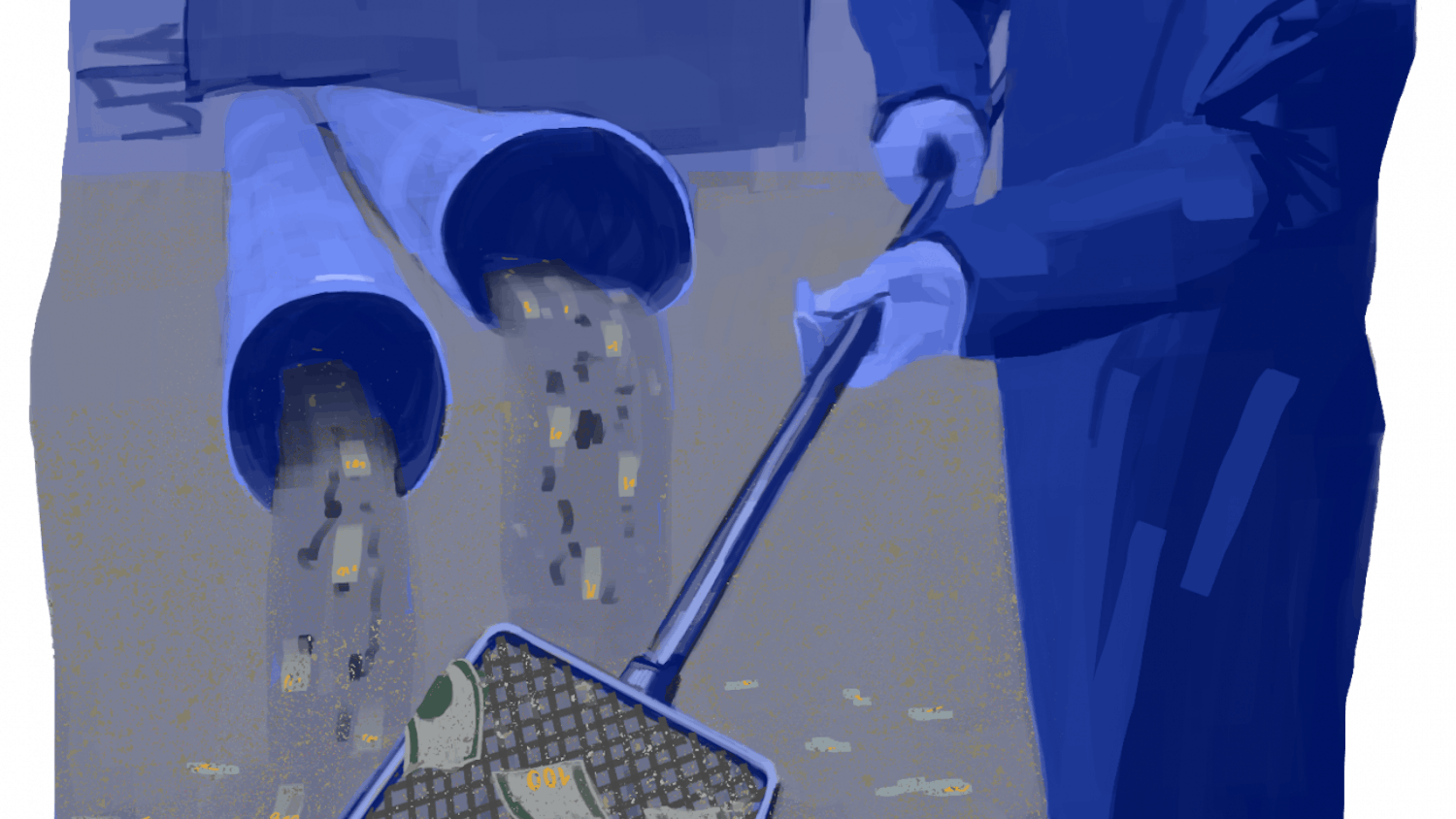iPhone users have hundreds of thousands of choices at their fingertips, and now some Brown developers are getting in on the game. Through the App Store, iPhone and iPod touch owners can download apps — extra features that users can download to their Apple phones — that pertain to every aspect of their lives. The possibilities, however, don't stop at the users.
Through the app market, Apple has opened up opportunities for independent software developers: a chance to make a profit, a new medium for development and the opportunity to compete with huge companies to make the next hit app. Several games, an automatic volume adjuster and a pregnancy test all got their genesis from Brown students who have already experienced the rewards and challenges of entering this growing market.
Applying themselves
Creating an app is not a simple process, as new developers must familiarize themselves with both Apple's programming language and the compilers that contain the numerous files of code.
Developers must work exclusively in Objective-C, a programming language developed by Apple that is "different from what's taught" in computer science classes at Brown, said developer Eshan Mitra '12, a Herald cartoonist.
Eric Stix '12, who created his first app just over a year ago, described the language as a "Java-C hybrid." He added that knowing both Java and C before writing his first app "was a big help" in learning to code in Objective-C.
"When I started making apps, the iPhone had only been out for maybe a year or two," said Ethan Richman '13. "There were not that many resources online" for using Objective-C and handling error messages and other problems, he said. While today there are many tutorials online, "there's still a lot of trial and error" in the coding process, Richman said.
Developers are responsible for coding everything that users will see. "You have to program your app and create all the content for it, whether it be images, sounds or textual content," said Paul Kernfeld '12.
"With the iPhone, it is specifically a challenge to make sure you can fit everything you want in the pretty small amount of screen space," Kernfeld added.
New developers must also register with Apple. This registration has a $100 price tag and gives the developer all of the software needed to create an app, including a way to test applications, Kernfeld said.
Critical review
Once a developer has created an app, it can't hit the marketplace just yet. The program must also be approved by the App Store Review Team — a process that can be a serious hurdle.
"The approval process is pretty notorious for being opaque," Kernfeld said. "They often don't provide much information about what goes on behind the scenes."
Stix attempted to make an app that recreated the iPod shuffle on the iPhone, but he said it was denied by Apple early in the development process for copying an Apple product, even though it was going to be produced "exclusively for their devices," he said.
"When you sign up to be an apps developer," the company's agreement "basically says Apple's allowed to accept or reject whatever they want," Stix added.
Richman also ran into problems with the review team. After creating an information-based app that included a questionnaire to help determine if the user might be pregnant, Richman also created a humorous, vulgar version of the same questionnaire.
"I got a call from Apple when they were reviewing," he said. "This guy was giving me a hard time for having little stick figures" reflecting varying levels of sexual promiscuity, he said.
Richman added that he was forced to change the rating on his app from all-ages to 17-or-older.
The review team does not only reject apps it deems inappropriate. It also makes sure that submitted apps work properly.
"If a button's not working, they'll call you up and tell you," Stix said. "When I've needed to change something, they've been very helpful."
Topping the charts
Once the review team accepts a program, they put it in the App Store on iTunes. Which apps users choose, though, depends on advertising, the quality of the app, the prestige of the developer — and pure luck.
There are currently more than 130,000 apps in the store. As a result, "a lot of the content immediately sinks to the bottom, which also makes it pretty tough to get a foothold in the market without luck or an advertising budget," Kernfeld said.
"I've seen some great games that have never seen the light of day," Stix said.
Large companies such as EA Games are major players in the apps market, and often buy up brand name games such as Scrabble and Tetris to sell in app form, Stix said. "Solo developers are inherently at a disadvantage because they can't pay for advertising," he added.
Apple will sometimes use the apps of independent developers in their ads, which can greatly boost the app's popularity, Stix said.
Richman's original pregnancy test app was featured in the iPhone App Directory, which profiles "the 270 most interesting apps," Richman said.
His app, "Dr. Amy's Am I Pregnant Quiz," is currently 55th on the store's top 100 Healthcare and Fitness apps list, but "when it was first released, it climbed pretty quickly" to the top spot on the category list. Richman created the quiz to turn a pregnancy information Web site — askdramy.com — into an app.
The competition is stiffest for game creators, as games comprise the greatest portion of the market.
"If you get on the top 100 games, you're fairly golden," Stix said. "As soon as you get to that point, there's a snowball effect."
Stix, Kernfeld, and Mitra have all created games in the app market, and Richman said he hopes to make a game in the future.
Richman said his Dr. Amy's program, in its peak at the top of the healthcare and fitness list, was downloaded more than 1,000 times per day.
Even without the benefit of advertising, an app can be successful just because it creates a buzz.
"You need to have a significant viral component in your app," Richman said. "There needs to be something that makes people talk about it."
Dollars and cents
Developers can reap huge profits from successful apps, choosing to charge a fee for downloading the program initially or to rake in revenue from advertisements contained within a free app.
Richman uses the latter technique, creating free apps and then relying on advertising revenue to profit from app creation. His next project involves another information-based app for a different company regarding clinical trials.
"There are millions and millions of iPhone users, a whole range of demographics," he said. "It's a great idea for a lot of companies" to get their information out through the apps market, so there is a large demand for developers, he added.
Mitra, Kernfeld, and Stix all choose to charge a fee on the app itself as opposed to placing ads within it. Apple takes a 30 percent cut of all pay-per-app revenues.
Mitra's app, ConqWord, is a 99-cent, two-player word game that involves trying to take over different parts of a board of letters by forming words.
Kernfeld's app, which he created with Evan Wallace '12, is also a word game. For 99 cents, users can download the fast-paced Wordtastic, which combines elements of Tetris and Boggle.
Stix created a successful game called Kitty Kannon — which reached the top five on the games chart — and an app that automatically adjusts song volume to eliminate volume discrepancies between songs. He now seeks to perfect an old classic — Snake.
"There are about 30 copies of Snake already for the iPhone," he said, but users find the apple-eating snakes in these versions too easy or difficult to control. His app will utilize a better control method, Stix said.
App culture
While profit may be a
main motivator for many developers, it is not the sole reason for entering the market.
"Essentially it's a gold rush right now," Kernfeld said. "Some apps make a whole lot of money, but there's a lot of competition, so we were mostly doing it for fun and just to get something out there with our name on it."
"They started this amazing trend," Stix said. "Me, a college kid, I can make an app and sell it to 50 million people."
This "app culture" also brings up questions about "to what extent the relationship between producer and consumer is changing," said Wendy Chun, associate professor in the department of modern culture and media studies.
Apple has moved the spotlight to the developers, and while the computing Goliath still calls the shots, Stix said, "it opened up a whole new opportunity for so many people."
"If you're an independent developer, you can take big risks," Stix said. Which brings the possibility of big profits. "It's an added element of creativity that maybe didn't exist before."
The fact that "The Moron Test," "I Am T-Pain" and "Knife Dancing" are all on the 100 Top Grossing Apps list speaks for itself.




